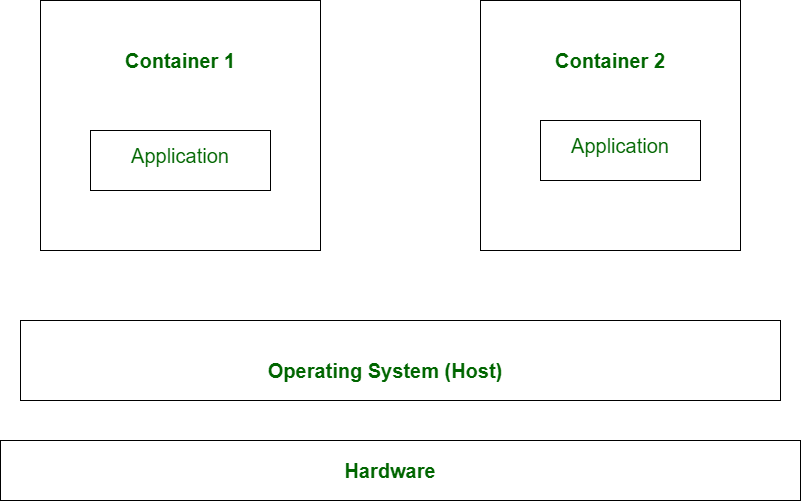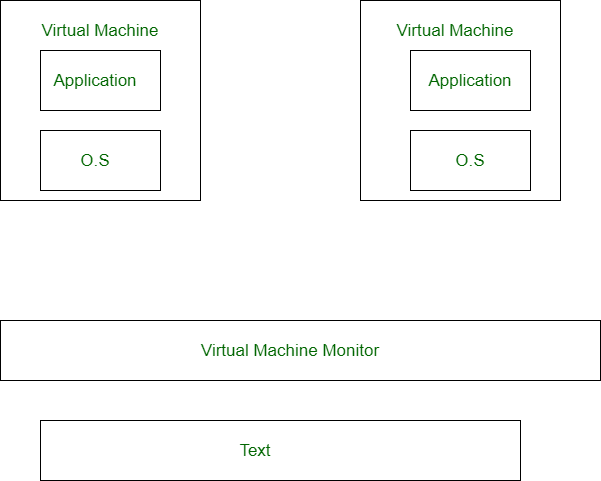Virtualization to Promote Green Computing
Last Updated :
09 Jul, 2020
A data center consumes the power that can otherwise be used to power thousands of homes, that huge level of power consumption is what makes data center and environmentalists look for ways to reduce power usage and make data centers for more energy-efficient than they currently are. Virtualization is the answer to resolving the power consumption of data centers. One of the primary goals of almost all forms of virtualization is to make efficient use of resources including energy. Simply defining virtualization is to make a single piece of hardware function as multiple parts. Different user interfaces isolate different parts of hardware thereby making each one behave and function as an individual, separate entity.
In the context of data centers, virtualization is installing virtual infrastructure that allows several operating systems and applications to sum on a lesser number of servers, helping to reduce overall energy used for data centers. Once the number of servers is reduced it also means that data centers can reduce the building size as well. Some of the advantages of virtualization which directly impacts efficiency and contribute to the environment include:
- Planned downtime is eliminated by migrating a virtual machine from one physical server to another.
- Dynamically balanced workloads across a server group and provide automatically failover for virtualized applications.
- Resource allocation is better managed and maintained.
- Virtualization exponentially increases a server group’s ability to share utility.
- Server utilization rates can be increased by up to 80% as opposed to an initial 10 to 15%.
The energy saved per server would translate into approximately 700 kilowatt-hour per year which is big with such tremendous potential for energy saving, virtualization is the best to practice green computing especially data centers in India.
Virtualization
It allows a logical and abstract view on the physical resource and individual server, datastore, network, and software. The basic concept of virtualization is to pool physical resources and manage them in a single unit. Simply, we can say that virtualization is the process that provides the facility to create different views of the services available to a different user.
Types Of Virtualization
Virtualization process can be classified into 5 types:
1. Operating system Virtualization: The use of OS virtualization is to help solve security problems. For this type of virtualization, the OS plays a major role, in these multiple identical systems that can run under one OS kernel.

2. Platform Virtualization: This type of virtualization allows us to run any desired OS and application in a virtual environment. There are two different methods for platform virtualization:
- Full Platform Virtualization: In this underlying hardware is completely simulated. This modification is not required by guest software.
- Para Platform Virtualization: In this underlying hardware is completely simulated. In this own isolated environment are run by guest software.

3. Storage Virtualization: Cloud systems also offer dynamically scalable storage space as a service. In this context storage virtualization has several advantages. To separate the datastore from the classical file server and to pool the physical storage system is the basic criteria of storage virtualization.
4. Network Virtualization: The technique such as load balancing is required in this environment because it must be possible to dynamically scale the services offered. Network Virtualization is also used by local networks and virtual services.
5. Application Virtualization: It encapsulates computer programs from the underlying operating system on which they are executed. Its advantages are:
- Compatibility.
- Local availability.
- Automatic management for updates.
Benefits of Virtualization
- Resource Usage: Physical servers are rarely working to the capacity because these operators usually allow for sufficient computing resources to cover the maximum use if the virtual machine is used than any load requirement can be satisfied from the resource pool. In case of demand increases then it is possible to delay the request made by the user.
- Management: It is possible to manage the resource pool automatically. A virtual machine can be created and configured automatically when it is required.
- Consolidation: Consolidation is done to run various applications on a smaller number of physical components.
- Energy Consumption: As the consolidation, reduces the number of physical components then simply it reduces energy consumption.
- Less space required: Every part of data center space is very expensive nowadays with the consolidation process the same performance can be obtained on a smaller footprint and costly expansion of an existing data center can be avoided.
- Emergency planning: It is possible to move the virtual machines from one resource pool to another. This provides better availability of services present.
Drawbacks
- It can have a high cost of implementation.
- It creates a security risk
- It creates availability issues in case the assets are not available to perform a task.
- It creates a scalability issue as many entities share the same resources, thus growth creates a lag within a virtualization network.
- It takes time as there are extra steps that need to be followed to generate the desired result.
- It requires several links in a chain that must work together cohesively which is not the case when you have local equipment where you are in full control of what you can do.
Like Article
Suggest improvement
Share your thoughts in the comments
Please Login to comment...